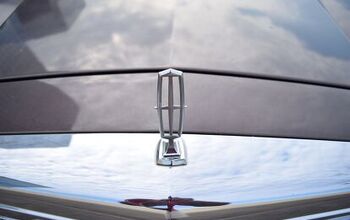QOTD: The $36,000 Question

According to several sources, the average price of a new car in America currently hovers around $36,000. This is being consistently dragged upward by folks who just gotta have that Denali or deploy a GL65 AMG to tool around the streets of Beverly Hills.
Using that yardstick, lets play a game. Imagine you have to go out and buy a new car — right now — with today’s average price as your upper limit. But there’s a catch — it’ll be your only car for the next 10 years.
Why 10 years? Pundits argue that’s roughly the average age of cars on the road in America, although you wouldn’t know it from a quick survey of the parking lots at most malls and country clubs. Having said that, our daily whip is aged six years and we just ditched a decade-old truck in favor of a 2018 model. Perhaps the 10-year estimate isn’t that far off the mark.
Anyway, never mind. We’re here to play the game. In this fictional scenario, I’d be trying to find something that would carry three people and life’s detritus without breaking the bank on running costs. Yes, I live in a part of the world where what falls from the sky is not to be believed, but I do not think all-wheel drive is a must. It is my fervent belief that good winter tires trump traction to four corners if those four corners have rubber on them with the same traction as baloney skins.
All hands know I’m a fan of the five-passenger Tahoe Custom, but at around $44,500 it’s 10 grand too expensive. Same thing with any F-150 with a decent engine that’s not equipped like a penalty box. This speaks to the massive profits in trucks, by the way. I’d like to mention the Volvo V60 wagon is juuust outside my self-imposed fictional financial limit. Blast.
Perhaps strangely, I find myself landing at Dodge, where a rear-drive Durango SXT can be had for around $30,000. Equipped with a more than adequate level of kit, a five-passenger Durango would be more than large enough for all of our flotsam and jetsam while not looking like every other crossover on the freeway. The Pentastar V6 and ZF eight-speed are a proven team. It retains external styling cues like foglights and is available in that annoying shade of red I like.
Still, an SUV? Jeez. At least it’s rear-drive. Maybe Steph was on to something.

Matthew buys, sells, fixes, & races cars. As a human index of auto & auction knowledge, he is fond of making money and offering loud opinions.
More by Matthew Guy
Latest Car Reviews
Read moreLatest Product Reviews
Read moreRecent Comments
- Probert They already have hybrids, but these won't ever be them as they are built on the modular E-GMP skateboard.
- Justin You guys still looking for that sportbak? I just saw one on the Facebook marketplace in Arizona
- 28-Cars-Later I cannot remember what happens now, but there are whiteblocks in this period which develop a "tick" like sound which indicates they are toast (maybe head gasket?). Ten or so years ago I looked at an '03 or '04 S60 (I forget why) and I brought my Volvo indy along to tell me if it was worth my time - it ticked and that's when I learned this. This XC90 is probably worth about $300 as it sits, not kidding, and it will cost you conservatively $2500 for an engine swap (all the ones I see on car-part.com have north of 130K miles starting at $1,100 and that's not including freight to a shop, shop labor, other internals to do such as timing belt while engine out etc).
- 28-Cars-Later Ford reported it lost $132,000 for each of its 10,000 electric vehicles sold in the first quarter of 2024, according to CNN. The sales were down 20 percent from the first quarter of 2023 and would “drag down earnings for the company overall.”The losses include “hundreds of millions being spent on research and development of the next generation of EVs for Ford. Those investments are years away from paying off.” [if they ever are recouped] Ford is the only major carmaker breaking out EV numbers by themselves. But other marques likely suffer similar losses. https://www.zerohedge.com/political/fords-120000-loss-vehicle-shows-california-ev-goals-are-impossible Given these facts, how did Tesla ever produce anything in volume let alone profit?
- AZFelix Let's forego all of this dilly-dallying with autonomous cars and cut right to the chase and the only real solution.


































Comments
Join the conversation
Whatever Charger that fits the price point would work for me.
If I can take advantage of incentives and/or find one hanging around on a dealer lot, I could just squeeze in a Jaguar XE AWD with the 2.0 diesel. I rented one in the UK a few years ago and averaged almost 60 mpg, I figure that should insulate against future fuel cost increases.